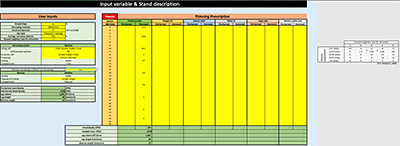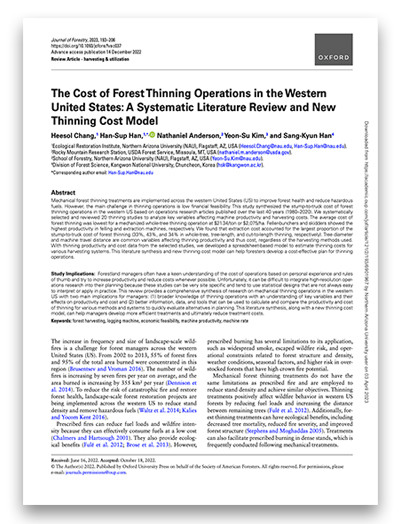ThinCost 1.0: A spreadsheet-based model to estimate thinning costs
Mechanical forest thinning treatments are implemented across the western United States (US) to improve forest health and reduce hazardous fuels. However, the main challenge in thinning operations is low financial feasibility.
This study synthesized the stump-to-truck cost of forest thinning operations in the western US based on operations research articles published over the last 40 years (1980–2020). We systematically selected and reviewed 20 thinning studies to analyze key variables affecting machine productivity and harvesting costs. The average cost of forest thinning was lowest for a mechanized whole-tree thinning operation at $21.34/ton or $2,075/ha. Feller-bunchers and skidders showed the highest productivity in felling and extraction machines, respectively.
We found that extraction cost accounted for the largest proportion of the stump-to-truck cost of forest thinning (33%, 43%, and 34% in whole-tree, tree-length, and cut-to-length thinning, respectively). Tree diameter and machine travel distance are common variables affecting thinning productivity and thus cost, regardless of the harvesting methods used. With thinning productivity and cost data from the selected studies, we developed a spreadsheet-based model to estimate thinning costs for various harvesting systems. This literature synthesis and new thinning cost model can help foresters develop a cost-effective plan for thinning operations.


